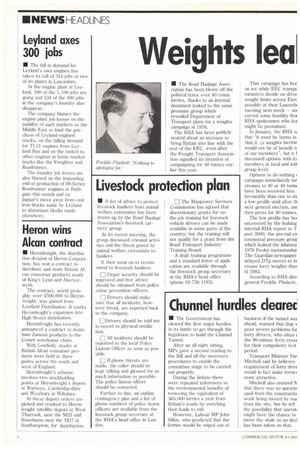Livestock protedion plan
Page 4

If you've noticed an error in this article please click here to report it so we can fix it.
• A list of advice to protect livestock hauliers from animal welfare extremists has been drawn up by the Road Haulage Association's livestock carriers' group.
At its recent meeting, the group discussed criminal activi. ties and the threat posed by animal welfare extremists to hauliers.
It then went on to recommend to livestock hauliers:
E Depot security should be improved and free advice should be obtained from police crime prevention officers.
E Drivers should make sure that all incidents, however trivial, are reported back to the company.
E Drivers should be told not to resort to physical retaliation.
E All incidents should be reported to the local Police Liaison Officer as soon as possible.
L If phone threats are made, the caller should be kept talking and gleaned for as much information as possible. The police liaison officer should be contacted.
Further to this, an outline contingency plan and a list of phone numbers of police liason officers are available from the livestock group secretary at the RHA's head office in London. The Manpower Services Commission has agreed that discretionary grants for onthe-job training for livestock vehicle drivers can be made available in some parts of the country; but the training will not qualify for a grant from the Road Transport Industry Training Board.
A draft training programme and a standard letter of application are available through the livestock group secretary at the RHA's head office (phone 01-736 1183).




























































